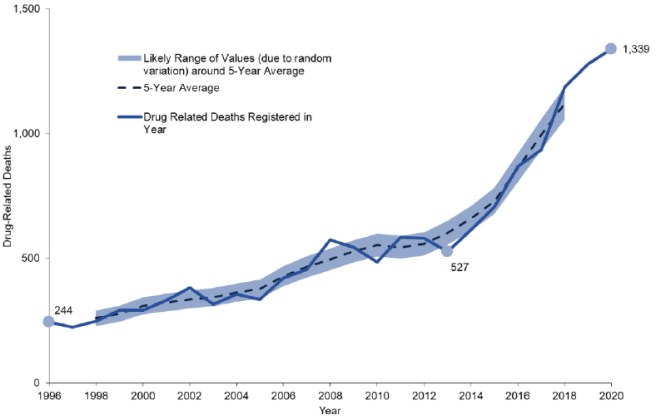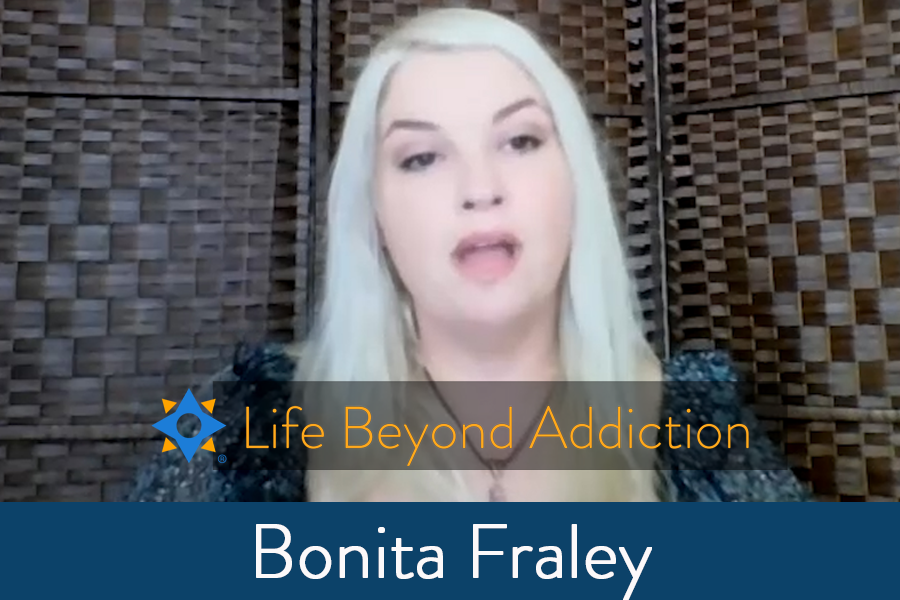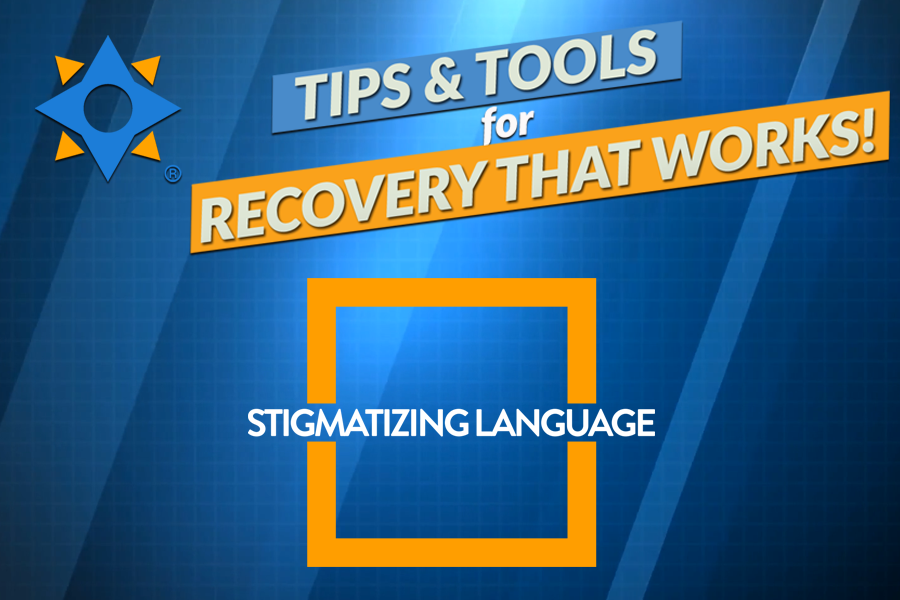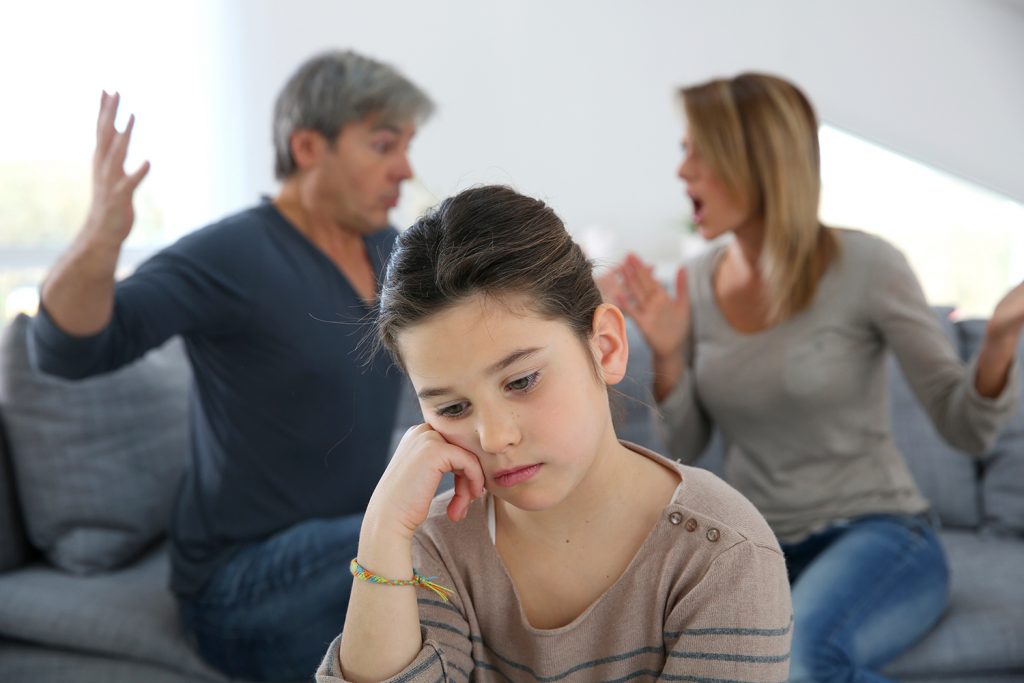
Dave Johnson is the Chief Executive Officer of the Fletcher Group, based in London, Kentucky. His background in social work, healthcare, and academia led him to starting Fletcher Group with the help of Ernie Fletcher, the former Governor of Kentucky. A recent grant connected them to SMART Recovery with the Rural Centers of Excellence Initiative.
In this podcast, Dave talks about:
- His journey from Big Sky country to the Motor City
- Flunking retirement after meeting Governor Ernie Fletcher
- Developing and operationalizing the Fletcher Group organization at record speed
- Being the catalysts for change
- Caring about the ones whom no one else does
- Receiving a HRSA grant for the Rural Centers for Excellence Initiative (RCOE)
- How and why recovery homes have gained public awareness in the last decade
- Connecting with SMART and implementing the curriculum and best practices into the houses
- Coaches and motivation
- The benefits for a recovery home participating in the RCOE program
- Gauging success: initiation, engagement, retention
- What recovery capital is and why it’s important
Additional resources:
Click here to find all of SMART Recovery’s podcasts
PLEASE NOTE BEFORE YOU COMMENT:
SMART Recovery welcomes comments on our blog posts—we enjoy hearing from you! In the interest of maintaining a respectful and safe community atmosphere, we ask that you adhere to the following guidelines when making or responding to others’ comments, regardless of your point of view. Thank you.
- Be kind in tone and intent.
- Be respectful in how you respond to opinions that are different than your own.
- Be brief and limit your comment to a maximum of 500 words.
- Be careful not to mention specific drug names.
- Be succinct in your descriptions, graphic details are not necessary.
- Be focused on the content of the blog post itself.
If you are interested in addiction recovery support, we encourage you to visit the SMART Recovery website.
IMPORTANT NOTE:
If you or someone you love is in great distress and considering self-harm, please call 911 for immediate help, or reach out to The National Suicide Prevention Hotline @ 800-273-8255, https://suicidepreventionlifeline.org/
We look forward to you joining the conversation!
*SMART Recovery reserves the right to not publish comments we consider outside our guidelines.*
Subscribe To Our Blog
Join our mailing list to receive the latest news and updates from the SMART Recovery Blog.
You have Successfully Subscribed!
What happens when I relapse? 5 Signs to look for

For preventing a relapse, it is important to recognize warning signs before the actual relapse happens. Here are five signs to look for that may help you prevent a relapse:
- You get complacent. Sometimes when recovery is going well, you may get too comfortable in your new state of being and you make think, “I can handle it from here.” You must stay on track with working the steps or the inevitable backward slide begins. Don’t let success be your trigger!
- Your attitude and mood begin to change. Right before a relapse, you may act the way you did when you were using: selfishly. As a result, you’ve stopped helping others. Staying connected to others through service is important to recovery. Serving others helps you to maintain humility and keep your focus away from selfish desires.
- You think about “just one” that maybe just one drink or just one pill won’t hurt. Understand that ALL it takes is just one to get you back to the same place you were when you last quit drinking or using.
- You have the desire to contact your old using buddies. Before a relapse, you may think more about the folks you used to hang around and the things you did together during your substance abusing days. Reaching out to friends that are still interested in using will put your recovery in danger.
- You neglect to use your recovery tools. Avoiding relapse takes hard work and dedication. Continual use of your recovery tools will help you stay connected to your support.
If you are experiencing any of these warning signs of a potential relapse, remember to reach out for help. And if a relapse occurs, don’t allow your pride to keep you from getting back on track with your recovery. Call your sponsor, got to a meeting, work the steps.
About Fellowship Hall
Fellowship Hall is a 99-bed, private, not-for-profit alcohol and drug treatment center located on 120 tranquil acres in Greensboro, N.C. We provide treatment and evidence-based programs built upon the Twelve-Step model of recovery. We have been accredited by The Joint Commission since 1974 as a specialty hospital and are a member of the National Association of Addiction Treatment Providers. We are committed to providing exceptional, compassionate care to every individual we serve.
There’s a narrative that’s been around for a while, but it’s been gaining ground in the last few months. This last couple of months alone, it’s been in the ether, permeating social media conversations and even appeared in an academic paper. The issue relates to recovery-oriented drug policies and the tone is negative.
The thrust of this narrative? It’s that recovery-oriented drugs policies cause excess deaths. In the latest iteration I read that Scotland’s previous drug strategy (The Road to Recovery – which I’m going to call R2R) is to blame, or in less certain pronouncements, ‘may be to blame’ for Scotland’s high drug-related deaths. When you look for the evidence to back up such claims, it is hard, if not impossible, to find. So, are these claims fact or fiction?
In the 1980s the swing away from an abstinence aim of drug and alcohol treatment to harm reduction was largely driven by the developing harms associated with HIV. This was a welcome and necessary development, but by the early 2000s, it was beginning to seem to some that treatment options were limited and that we may have set the bar too low. When R2R was introduced, a readjustment took place. Did that readjustment cause harm?
In a recent paper[1], which I recommend you read, the focus is on benzodiazepines but there is a reference to drug policy more generally,. Colleagues write about changing drug markets in light of reductions in benzodiazepine prescribing:
“This may have been further exacerbated by a national drugs policy in 2008 based on achieving abstinence from all drugs. By discouraging agonist treatment a potential unintended consequence was that people who use drugs looked for supplements to diminishing prescriptions doses of methadone and buprenorphine.”
This paragraph has only one reference (to the R2R drugs strategy) but contains some significant statements which are presented as ‘potential’ facts. What are they?
- The national strategy was based on achieving abstinence from all drugs
- Agonist treatment was discouraged
- Prescriptions were reduced
- As a result, other substances were sought
It’s important to point out that my colleagues’ paper focuses on possible negative consequences from a reduction in benzodiazepine prescriptions ( R2R is not under the spotlight) so I’m picking up what appears to be a minor aside, but the underlying principle is one that deserves scrutiny. Is a recovery focus a dangerous focus?
Abstinence from all drugs?
The Road to Recovery was published in 2008. Drug-related deaths were on a gradually increasing trajectory before then. From the year of publication of R2R to 2010, drug related deaths actually declined before climbing gradually from 2010 to 2013 when they really took off, so it’s quite hard to link the policy directly to increasing drug deaths.

In any case, is it true that was R2R an abstinence-focussed policy? How many times, for instance, is abstinence mentioned in the text of its 96 pages? I’ve counted. It’s four. What are they?
- The first time abstinence is addressed in R2R is a historical reference to the policy response in the 1980s to both HIV and crime which led to a necessary movement away from abstinence to Scotland’s harm reduction focus.
- The second time (ironically) is to decry the artificial harm reduction vs abstinence divide and to point out the complimentary nature of these approaches.
- The third time is when it mentions the programme I work in, which was used (amongst others) as an example of how services can be broadened to offer choice – not instead of, but as well as.
- The fourth time is when it is pointed out that some achieve their recovery through abstinence and others through treatments which aim at stabilisation or reduction in use: hardly an abstinence-only ordinance.
So what is recovery?
Recovery in this strategy embraces reducing harm, reducing use, stabilisation, MAT and, yes, access to treatments associated with abstinence. At no point does the strategy call for reductions in access to OST – indeed it highlights and quotes papers underlining the primacy of this approach, calling for improved delivery of methadone (p22) and emphasising the role of GPs and pharmacists in providing substitute prescribing (p28-29). The Scottish Government ‘strongly’ supported the Orange Book Guidelines as ‘an authoritative guide’. The Orange Book promotes MAT as an evidence-based approach.
In R2R, recovery is not defined in terms of abstinence, but in terms of achieving personal goals, preventing relapse to illicit drugs, improving relationships, engaging in meaningful activities, building self-esteem, and building a home with family – the things patients consistently tell me (and I’m guessing, many other practitioners) that they want from treatment. When we conflate ‘recovery’ with ‘abstinence’ we get into this kind of muddle.
Harm reduction is often made an unnecessarily controversial issue, as if there were a contradiction between treatment and prevention on the one hand, and reducing the adverse health and social consequences of drug use on the other. This is a false dichotomy. They are complementary
United Nations 2008
It’s not that controversial
What’s in the R2R in terms of its focus on recovery is not new or even without consensus. The Reducing Harm, Promoting Recovery report of 2007, the Essential Care report of 2008 and the subsequent Independent Expert Review on Opioid Replacement Therapies in Scotland, commissioned by the then Chief Medical Officer, Sir Harry Burns, have similar themes and recommendations. They all agree on the prime importance of opioid substitution but point out that recovery is much more than a prescription and that Recovery Oriented Systems of Care (ROSC) are needed to help people achieve their goals. The current National Mission to reduce drug deaths is similarly broad and ambitious.
What the R2R strategy did was raise the bar beyond a prescription, explore goals and introduce the notion of individual choice. A bit like our current strategy. People deserve to be able to make informed choices. They deserve access to a range of evidence-based treatments.
Despite its benefits in reducing harms, some people do not want OST to be a forever thing. Some have moved on from OST and are in long term stable abstinent recovery. Every major review and policy paper that informed the R2R (and the current alcohol and drug strategy in Scotland) has extolled the benefits of OST but has also highlighted what is missing in our services.
It is not a criticism of OST to highlight areas where we need to do better. For instance, although OST is the fundamental treatment approach for those with opioid use disorders, if we think in terms of recovery/flourishing we actually don’t know much about whether it helps people achieve their life goals.
In R2R, nowhere is abstinence promoted over MAT – this idea is nowhere to be found in the referenced reports and reviews. Dr Brian Kidd the Chair of the Independent Expert Review despaired over the lack of ‘institutional memory’ in our structures and policies that have failed to see us take on board the lesson that MAT, while essential, is not the whole answer and that choice, opportunity, governance, data/evaluation, ROSCs, detox and rehab also need to be present.
Agonist (OST) treatment discouraged?
At the time of R2R I was working in an integrated system which encompassed harm reduction, MAT, detox, and abstinence. My colleagues working in specialist addiction services in the community absolutely did not discourage agonist treatment (opiate substitution); very much the opposite – it was and still is the primary focus of treatment for those with opioid use disorders.
I was teaching on the RCGP Certificate in the Management of Drug Misuse Part 2 course during this period. The course focussed on the evidence-base for OST and taught primary care practitioners how to embrace harm reduction and OST principles. The R2R was discussed, but we did not see it as a policy that promoted abstinence over OST. Yes, we also covered the concept of recovery, but not instead of OST. If prescriptions for OST were reduced as a direct result of R2R, I’d be interested to see that evidence;. Indeed, we were strongly encouraging GPs to prescribe.
Recovery is about helping an individual achieve their full potential – with the ultimate goal being what is important to the individual, rather than the means by which it is achieved.
Recovery policies and drug deaths
It is possible that by shifting the focus to person-centred outcomes, the R2R did impact negatively through local interpretations and practice, but unless there is evidence to back this up, this notion remains opinion. Similar claims were made during the work I was involved with when a committee of experts updated the UK ‘Orange Book’ National Clinical Guidelines on Drug Misuse and Dependence. On the 15th of September 2015 in London the working group heard evidence from Public Health England that they had studied the data on drug-related death data in England and explored whether these could be linked to ‘the recovery agenda’. They found no such link.
I don’t believe that the Road to Recovery was an abstinence-based strategy, nor that because of it, prescribers were under any pressure to reduce access to OST. I don’t think it’s accurate to describe the R2R as ‘based on achieving abstinence from all drugs’ (implying this includes MAT). I have not seen evidence that R2R contributed to our drug deaths crisis. What I have seen is a painful divide developing between harm reduction and recovery. When we repeat opinion and particularly when we package it as fact, this adds to the harm reduction good, abstinence bad narrative. This divide is turning into an ever deeper wound that needs healing, not poking.
The substance abuse field in both its research as well as treatment efforts is not giving due consideration to flourishing. We need to renew our efforts to give meaning and purpose to the lives of patients.
Eric Strain
There are lots of people in long term abstinent recovery from opioid use disorder in Scotland. Many of them acknowledge the lifesaving impacts of harm reduction interventions and MAT. There are plenty of people in recovery on MAT who have resolved their problems and are very happy to remain on medication. They are in recovery too.
Recovery journeys tend not to be linear; people may move between treatments and a particular status. Their needs and goals should be central to policy, as should measures to reduce harm. Our policies need to reflect the need for a variety of options and emphasise how important the elusive Recovery Oriented Systems of Care are in ensuring joined up approaches.
We should celebrate the gains individuals make in terms of recovery whether that’s through MAT or abstinence. I don’t think the R2R was a perfect drugs policy – none are – but it did encourage us to think bigger. I don’t believe it is or was partly responsible for our catastrophic drug deaths, though if we keep saying it often enough, I suppose eventually we will come to believe it.
Continue the discussion on Twitter: @DocDavidM
Photo credit: https://www.istockphoto.com/portfolio/comicsans?mediatype=illustration (licensed)
[1] A McAuley, C Matheson, JR Robertson, From the clinic to the street: the changing role of benzodiazepines in the Scottish overdose epidemic, International Journal of Drug Policy, Volume 100, 2022

When teens face trouble, especially with substance or self-abuse, the barriers to help can be especially significant. There might be a natural reluctance to reach out to the “adult world,” or avoidance of issues that seem unsolvable, perhaps because of teen tendencies for thinking in extremes. Many teens get stuck in negative downward spirals, leading to damaging consequences and emotional despair.
Luckily for those who have found it, SMART Recovery has become a growing solution to stopping negative behavior in the teen population. Teens relate to SMART’s stigma free and self-empowering approach.
This is in part due to people like Eboni Jewel Sears, who found the SMART Recovery program and volunteer their time to facilitate mutual support meetings in local communities around the country. Eboni is a facilitator for teens age 14-19 years old at Alternative Peer Group in Las Vegas. Through her efforts, she loves seeing the teens who attend her meetings grow using SMART’s tools focusing on self-esteem, unconditional acceptance of self, others, and life, and making good decisions.
“I think it’s really rewarding to be able to serve this community [and] show teens they’re the master of their own fate, and to empower them with the tools to do that…our main focus is to keep teens in recovery—no matter what we need to do, we do [and] fun things always help; you remember fun things more.“
To make learning the tools fun, Eboni uses activities like card games to bring SMART Recovery tools and content to life. She says it’s about exposing young people to helpful information consistently.

Eboni’s journey to SMART and her current strong affirmation of the principles and practices came after a long and winding road. Her military family moved a lot around the country, and she is a veteran herself, having served as a Navy Seabee. As far as work experience, she’s spent significant time as a long-haul truck driver and builder. For her, the facilitator training was a personal journey as well, providing an opportunity to be introspective, which was life-changing. As she continued to work on recovery, she came to believe that SMART was the best fit for her.
“I kept a lot of things to myself while in Navy, like being part of the LGBT community. In SMART, I was able to be myself, I just got to work on me and that’s exactly what I needed to do in the beginning. It was just very comforting and supportive.“
Her personal journey now includes becoming a minister, a decision about which she didn’t know how people would react.
“I wasn’t sure about how it would be received [but] no one has mentioned it or had a problem with it. For me I feel very accepted in the SMART community and always have.“
Help Us Reach More Teens and Youth In Need

As demonstrated in Eboni’s story, the ripple effect of impacting one life impacts others. It is because of individuals like Eboni, who experience SMART and then decide to use their time, energy, and resources to spread its self-empowering messages, that we are able to reach more and more people who need support.
Unfortunately, there are communities – and teens – across the country who still desperately need increased access to free, self-empowering, science-based mutual help groups. We are working to meet that need.
Your year-end gift to our Growth Fund will be put to work immediately, to help more people like Eboni and the teens in her meetings find the self-empowering recovery tools and peer support they need to overcome addiction and go on to live fulfilling and meaningful lives.
Additional Resources:
PLEASE NOTE BEFORE YOU COMMENT:
SMART Recovery welcomes comments on our blog posts—we enjoy hearing from you! In the interest of maintaining a respectful and safe community atmosphere, we ask that you adhere to the following guidelines when making or responding to others’ comments, regardless of your point of view. Thank you.
- Be kind in tone and intent.
- Be respectful in how you respond to opinions that are different than your own.
- Be brief and limit your comment to a maximum of 500 words.
- Be careful not to mention specific drug names.
- Be succinct in your descriptions, graphic details are not necessary.
- Be focused on the content of the blog post itself.
If you are interested in addiction recovery support, we encourage you to visit the SMART Recovery website.
IMPORTANT NOTE:
If you or someone you love is in great distress and considering self-harm, please call 911 for immediate help, or reach out to The National Suicide Prevention Hotline @ 800-273-8255, https://suicidepreventionlifeline.org/
We look forward to you joining the conversation!
*SMART Recovery reserves the right to not publish comments we consider outside our guidelines.*
Subscribe To Our Blog
Join our mailing list to receive the latest news and updates from the SMART Recovery Blog.
You have Successfully Subscribed!
Note: nothing in this post should be considered clinically instructive or supervisory. Rather, I wanted to simply share an inspiration and my thoughts about it with others in our field.
Back in the early 2000’s, the organization where I worked joined the Network for the Improvement of Addiction Treatment (NIATx). For those that might not know, NIATx is a structured national effort to develop leadership in change management across the field of addiction treatment. We joined NIATx during Round 2 of the grant-funded portion of NIATx’s history.
One of the NIATx leadership principles is to borrow ideas from outside the field. As they summarize:
Principle 4: Get Ideas From Outside the Field. Developing innovative solutions to entrenched problems often requires looking beyond the boundaries of the familiar and shaking things up a bit. Looking at practices of other industries is a way to push beyond those boundaries.
To me, that encouragement applies to us as individual people, not just the systems within which we work and serve. And it is in that spirit that I offer this blog post.
I was educated in a strict, hard-science approach to psychology and a strong adherence to Cognitive-Behavioral Therapy. In more recent years I’m come to realize that for me that narrowness is a bit of an entrenched problem.
Just the other day I was listening to the famous painter Jackson Pollock describe his approach to painting. In the documentary film, he said:
My painting is direct. I usually paint on the floor. I enjoy working on a large canvas. I feel more at home, more at ease, in a big area. Having the canvas on the floor I feel nearer, more a part of the painting. Sometimes I use a brush but often prefer using a stick. Sometimes I pour the paint straight out of the can. I like to use a dripping, fluid paint. My method of painting is a natural growth out of a need. I want to express my feelings rather than illustrate them. Technique is just a means of arriving at a statement.
Readers from almost any profession who were taught early to have a strict allegiance to one way of thinking can probably imagine or feel the unusual kind of freedom Jackson Pollock is describing. And those of us who were educated in a hard-science approach to psychology or taught to show a rather rigid conformity to one specific school of therapy (like cognitive-behavioral therapy, for example) can certainly relate.
I was greatly inspired by what he said. And at this stage in my career, I like Pollock’s quote quite a bit.

Here are some thoughts I had about how that quote can apply to the professional part of our field:
Direct. To me this means his process is at least not made worse by the assumptions and methods that are installed by, or that result from, academic learning. And to me it means his work is not merely achieved by a careful and deliberate adherence to a pre-packaged form, content, or process. Rather, his method arises spontaneously from within him.
- I wonder if our professional help is creative enough when it needs to be.
On the floor. He adjusts the direction of the creative process. He recognizes that the space itself is an assumption that can be changed. Adjusting the space itself reveals he had a level of awareness of what would commonly be overlooked as too obvious.
- Can our counseling be like that? For example, simply going outdoors for a session has a potentially powerful impact.
A large canvas. During the documentary one commentator stated that Pollock wanted to work within a visual field that did not include the edges of the canvas. And in that way, Pollack made sure the work was not defined and confined by the edges of the physical material upon which the content was placed. This brings to mind my formulation of the analytic stance and the Change Process that I have shared previously at Recovery Review. In our work as addiction professionals:
- Can we suspend time, suspend the pressure to talk, and suspend the pressure to have the right answer – when we need to?
- Can we listen, take the time to think, and allow silence – when we need to?
More at ease in a big area. Bill White comments fairly extensively in his writings about the Ecology of Recovery.
- As addiction professionals, what of the Ecology of Counseling?
Floor…feel nearer…part of the painting. This makes me wonder if we as addiction professionals can:
- find and hold our most true and most conscious connection to the process as we help someone, and
- not be lost in the story that we hear or lost in our own thinking.
Pour the paint. To me the can of paint represents the reservoir of the unconscious. This reminds me of a comment from Howard Levine (an MD psychoanalyst) who said that sometimes it is better to make an enlivening countertransference mistake than to be technically correct, and yet “dead”, with the patient.
- I wonder if we as addiction professionals can be helpful, rather than frozen and stuck in our professional armor or initial training?
Natural growth out of need. I wonder if we as addiction professionals can:
- back up enough from our initial training, and
- exit enough of our own assumptions, to
- identify the simple and different need in each person, and respond accordingly and naturally?
Express vs Illustrate. Can we, as people, express ourselves authentically rather than present an “accurate” or desirable illustration of some part of ourselves?
A statement. What is it we want to convey?
- I wonder if we as addiction professionals can allow ourselves the sufficient silence to identify our statement in its finality, and then also construct and permit the spontaneous expression of it before we attempt to say it?
Hopefully someone might consider these inputs from both inside and outside the field beneficial in some way.
Suggested Reading
The Behavioral Health Recovery Management Statement of Principles

Hear Bonita’s amazing story of resilience and courage to succeed at recovery, and now provide support in the form of SMART Recovery meetings that she facilitates for people in Lima, Ohio.
Find Bonita’s meeting in Lima, Ohio.
Subscribe to the SMART Recovery YouTube Channel
Video storytelling is a powerful tool in recovery, and we are proud to share our SMART Recovery content free-of-charge, available anywhere, on any device. Our videos hope to inform, entertain, and inspire anyone in the recovery community.
Subscribe to our YouTube channel and be notified every time we release a new video.
PLEASE NOTE BEFORE YOU COMMENT:
SMART Recovery welcomes comments on our blog posts—we enjoy hearing from you! In the interest of maintaining a respectful and safe community atmosphere, we ask that you adhere to the following guidelines when making or responding to others’ comments, regardless of your point of view. Thank you.
- Be kind in tone and intent.
- Be respectful in how you respond to opinions that are different than your own.
- Be brief and limit your comment to a maximum of 500 words.
- Be careful not to mention specific drug names.
- Be succinct in your descriptions, graphic details are not necessary.
- Be focused on the content of the blog post itself.
If you are interested in addiction recovery support, we encourage you to visit the SMART Recovery website.
IMPORTANT NOTE:
If you or someone you love is in great distress and considering self-harm, please call 911 for immediate help, or reach out to The National Suicide Prevention Hotline @ 800-273-8255, https://suicidepreventionlifeline.org/
We look forward to you joining the conversation!
*SMART Recovery reserves the right to not publish comments we consider outside our guidelines.*
Subscribe To Our Blog
Join our mailing list to receive the latest news and updates from the SMART Recovery Blog.
You have Successfully Subscribed!

Hi Folks! I’m OboeJeff, a 69-year-old SMART Recovery member and facilitator. I came into SMART over five years ago with an acute substance use disorder and a long history of multiple substance use and maladaptive behaviors. I am married to a wonderfully tolerant and understanding woman, and am passionate about music, theater, art, hospice volunteer work, birding, hiking, our water garden and fishpond, and -over the period of the pandemic- volunteering at many vaccination clinics.
SMART Recovery has given me the opportunity to transform what had become a seriously dangerous and unhealthful life into much more of what I want for myself on this planet. Facilitation provides me with tremendous reinforcement of the power of the program, the meetings, the tools, and allows me the opportunity to provide service by giving back some of what I have learned and experienced to others who may be still struggling.
I hope you will consider trying at least 4-6 different SMART meetings if you are on the fence about the program, and I encourage you to find whatever path makes the most sense for you in your journey of recovery and transformation.
Learn more about becoming a SMART volunteer.
Find Jeff’s SMART Recovery Online (SROL) meeting.
Subscribe to the SMART Recovery YouTube Channel
Video storytelling is a powerful tool in recovery, and we are proud to share our SMART Recovery content free-of-charge, available anywhere, on any device. Our videos hope to inform, entertain, and inspire anyone in the recovery community.
Subscribe to our YouTube channel and be notified every time we release a new video.
PLEASE NOTE BEFORE YOU COMMENT:
SMART Recovery welcomes comments on our blog posts—we enjoy hearing from you! In the interest of maintaining a respectful and safe community atmosphere, we ask that you adhere to the following guidelines when making or responding to others’ comments, regardless of your point of view. Thank you.
- Be kind in tone and intent.
- Be respectful in how you respond to opinions that are different than your own.
- Be brief and limit your comment to a maximum of 500 words.
- Be careful not to mention specific drug names.
- Be succinct in your descriptions, graphic details are not necessary.
- Be focused on the content of the blog post itself.
If you are interested in addiction recovery support, we encourage you to visit the SMART Recovery website.
IMPORTANT NOTE:
If you or someone you love is in great distress and considering self-harm, please call 911 for immediate help, or reach out to The National Suicide Prevention Hotline @800-273-8255, https://suicidepreventionlifeline.org/
We look forward to you joining the conversation!
*SMART Recovery reserves the right to not publish comments we consider outside our guidelines.*
Subscribe To Our Blog
Join our mailing list to receive the latest news and updates from the SMART Recovery Blog.
You have Successfully Subscribed!

Words matter, which is why, in this episode of Tips & Tools, we discuss how stigmatizing language can negatively impact successful recovery.
Dr. Billina Shaw’s conference presentation
Dr. Richard Saitz’s conference presentation
Subscribe to the SMART Recovery YouTube Channel
Video storytelling is a powerful tool in recovery, and we are proud to share our SMART Recovery content free-of-charge, available anywhere, on any device. Our videos hope to inform, entertain, and inspire anyone in the recovery community.
Subscribe to our YouTube channel and be notified every time we release a new video.
PLEASE NOTE BEFORE YOU COMMENT:
SMART Recovery welcomes comments on our blog posts—we enjoy hearing from you! In the interest of maintaining a respectful and safe community atmosphere, we ask that you adhere to the following guidelines when making or responding to others’ comments, regardless of your point of view. Thank you.
- Be kind in tone and intent.
- Be respectful in how you respond to opinions that are different than your own.
- Be brief and limit your comment to a maximum of 500 words.
- Be careful not to mention specific drug names.
- Be succinct in your descriptions, graphic details are not necessary.
- Be focused on the content of the blog post itself.
If you are interested in addiction recovery support, we encourage you to visit the SMART Recovery website.
IMPORTANT NOTE:
If you or someone you love is in great distress and considering self-harm, please call 911 for immediate help, or reach out to The National Suicide Prevention Hotline @800-273-8255, https://suicidepreventionlifeline.org/
We look forward to you joining the conversation!
*SMART Recovery reserves the right to not publish comments we consider outside our guidelines.*
Subscribe To Our Blog
Join our mailing list to receive the latest news and updates from the SMART Recovery Blog.
You have Successfully Subscribed!
Families Need Recovery, Too

Substance Use Disorder affects one’s body, mind, and soul—but the damage doesn’t end there. Families and friends also suffer as their loved one’s dependency progresses, stress builds, and communication starts to break down. Families need to recover from the disease, too.
It is not uncommon for family members to feel imprisoned by this disease. As destructive, self-defeating behaviors increase, family members and those in active use alike shift into survival mode, in an attempt to make it through another day of ever-worsening problems.
As this process occurs, it becomes more difficult to have honest communication and maintain a sense of self. Intimacy and closeness are replaced by fear and loneliness. Family members focus on what they can do to control the situation and begin to accept their loved one’s responsibilities in an attempt to help. Dreams fade, resentment builds, trust disappears, and hope dims.
Sound familiar? If you’re a family member struggling with a loved one suffering from substance use disorder, here are some steps you can take now to begin your own recovery:
- Learn about the disease, including the effect it has had on family members.
- Take responsibility for your choices.
- Develop and set healthy boundaries.
- Allow, and respect, your loved ones need to take responsibility for their choices and actions.
- Accept your situation in an honest, realistic, and loving way.
- Reach out for help and learn from others’ experiences through community support networks like Al-Anon and Nar-Anon.
- Give yourself credit for slow, steady progress.
- Understand there are no quick fixes!
Many people have broken free from the isolation and oppression that substance use disorder can bring. Treatment centers, therapy, and community self-help groups offer opportunities to learn more about the disease, yourself, and how to live a more fulfilling life instead of just surviving.
About Fellowship Hall
Fellowship Hall is a 99-bed, private, not-for-profit alcohol and drug treatment center located on 120 tranquil acres in Greensboro, N.C. We provide treatment and evidence-based programs built upon the Twelve-Step model of recovery. We have been accredited by The Joint Commission since 1974 as a specialty hospital and are a member of the National Association of Addiction Treatment Providers. We are committed to providing exceptional, compassionate care to every individual we serve.
